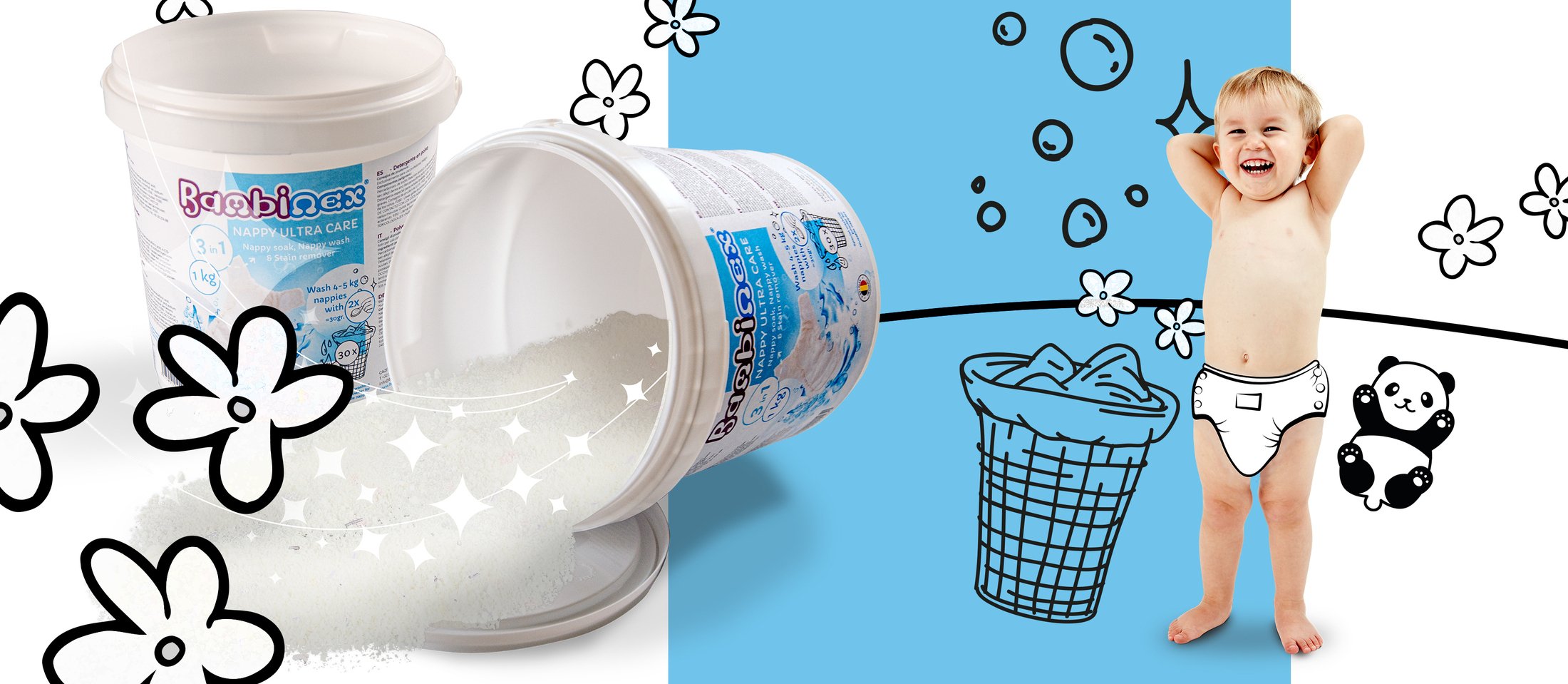Storage
Many nappies are best stored dry for a maximum of 2 to 3 days in the water and odour-proof nappy sack or a bucket with a lid. Hang a laundry net in the bucket beforehand. You can take the nappies out of the nappy sack or bucket and put them in the washing machine in a single action.
Do not use any essential oils, perfume or stain removers that could harm the quality of the nappies or cause any allergic reactions.
Washing
Too much detergent will harm the nappies' absorption capacity.
It is absolutely necessary not to exceed the recommended doses, even if they seem small, or to use any prohibited products. A failure to follow the washing instructions is often the cause of leaks, damage and sometimes unusable nappies. The washing instructions are simple. Only a proper application will guarantee optimum absorption capacity for the nappies.
Washing instructions
Still important to know:
It is absolutely necessary to wash and dry all the absorbent parts 3 times before using them for the first time.
New nappies still retain wax and fat that were necessary for manufacture and therefore reduce the absorption capacity. After a few wash cycles, all the wax and fat will be gone and the fibres will be open.
A few more things:
Mums using a cream to care for the baby's bottom, must absolutely use an absorbent cloth. The cream collects on the absorbent layer, which becomes impermeable and hinders absorption.
- Wash at 40°, in the event of illness, at maximum 60°.
- Only use washing powder, ideally washing powder designed for colour washing. The safest choice is to use the Bambinex washing powder. This was developed specially for washable nappies and guarantees a clean wash, leaving behind a minimum of residues in the nappy after washing. This washing powder is even effective at a 30° temperature.
- Normal dose, not to be exceeded: 30 grams per 4.5/5kg nappies or 2 soup spoons. The reason for this is explained under residues.
- Chlorine / bleach, products containing chlorine are prohibited: will make the nappies useless.
- Vinegar, strongly discouraged, damages the rubber in the elastic.
- Residues: liquid detergent, fabric softeners, stain removers, Marseilles soap, essential oils and stain repellents are prohibited. They contain residues that collect in a layer of fat on the nappies.
- Wash cycle: if the nappies are very dirty, run a pre-wash programme. Wash at 40° in any case (60° in the event of illness) with the special washing powder at the right dose. Give preference to a cycle with a rinse programme that removes washing powder residues.
- Drying: Dry on the washing line and in the sun if possible. This is the cheapest way and also has the least impact on the environment. Sunlight is an outstanding stain remover and bleaching agent. After drying, squeeze the nappies in your hands until they feel smooth. You may want to put the nappies in the tumble dryer for 5 minutes to smooth them out again too. Dry in the tumble dryer. Protective covers and nappy sacks are largely dry when you take them out of the washing machine. This makes it unnecessary to dry them in the tumble dryer. If you choose to dry the protective cover in the tumble dryer anyway, do so at a low temperature, otherwise the polyurethane film will be damaged. All the nappies and accessories can be dried at a moderate temperature. Drying at a high temperature can shorten the lifespan of the nappies.
